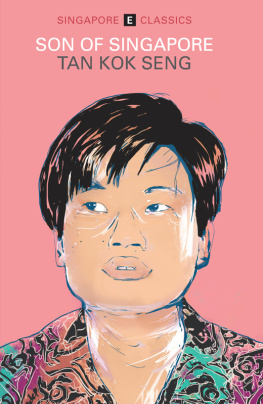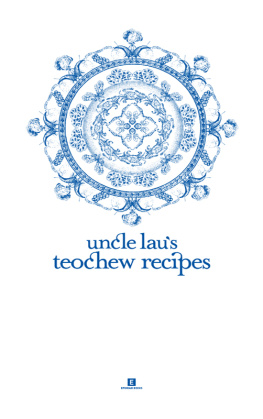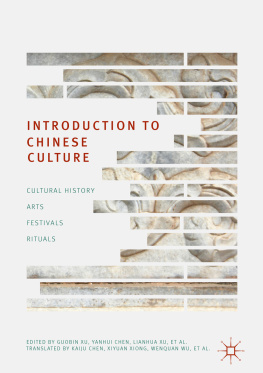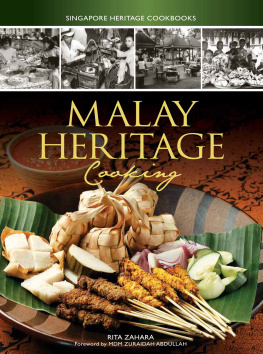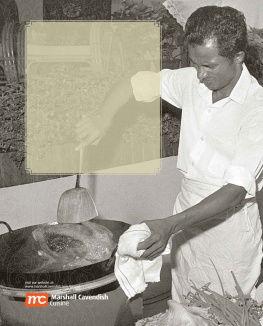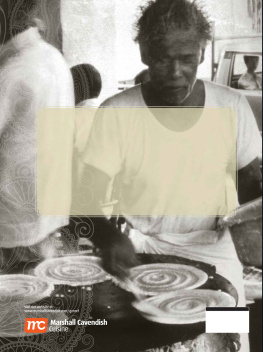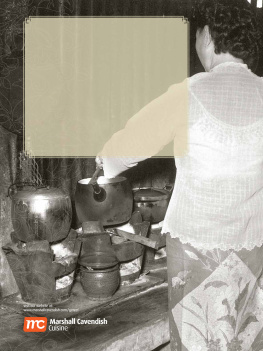
AN INTRODUCTION TO THE CULTURE AND HISTORY OF
THE TEOCHEWS IN SINGAPORE
Tan Gia Lim

Published by
World Scientific Publishing Co. Pte. Ltd.
5 Toh Tuck Link, Singapore 596224
USA office: 27 Warren Street, Suite 401-402, Hackensack, NJ 07601
UK office: 57 Shelton Street, Covent Garden, London WC2H 9HE
National Library Board, Singapore Cataloguing in Publication Data
Names: Tan, Gia Lim.
Title: An Introduction to the Culture and History of the Teochews in Singapore / Tan Gia Lim.
Description: Singapore : World Scientific, [2018]
Identifiers: OCN 1033694471 | 978-981-32-3935-7 (hardcover)
Subjects: LCSH: Teochew (Chinese people)--Singapore--History. | Teochew (Chinese people)--Singapore-- Social life and customs.
Classification: DDC 305.895105957--dc23
AN INTRODUCTION TO THE CULTURE AND HISTORY OF THE TEOCHEWS IN SINGAPORE
Copyright 2018 by World Scientific Publishing Co. Pte. Ltd. & Charlene Tan
All rights reserved. This book, or parts thereof, may not be reproduced in any form or by any means, electronic or mechanical, including photocopying, recording or any information storage and retrieval system now known or to be invented, without written permission from the publisher.
For photocopying of material in this volume, please pay a copying fee through the Copyright Clearance Center, Inc., 222 Rosewood Drive, Danvers, MA 01923, USA. In this case permission to photocopy is not required from the publisher.
ISBN 978-981-3239-35-7
FRONT COVER: THE 60S IN RETROSPECT (1981). Chua Mia Tee, Oil on canvas
Printed in Singapore
This book is dedicated with gratitude to my great-grandfather and the many Teochew pioneers who took that leap of faith to gu hung to Selat () in pursuit of better lives for themselves, their families in Chaozhou and eventually for us, the Teochews in Singapore
C ONTENTS
F OREWORD
T his book modestly describes itself as an Introduction but is in fact a treasure trove of information on the history and culture of the Teochews in Singapore. Singapore is a rich tapestry with many threads woven into it. Without the Teochew threads, Singapore will look different like a picture with a colour missing.
It has been estimated that there are as many Teochews living outside Mainland China as there are living in China. Even within China, the Teochews are everywhere often playing a role disproportionate to their numbers. They are bound by a strong selfidentity, which sometimes is criticized as clannish-ness. But this sense of identity is also a deep source of strength which partly explains the relative success of Teochews wherever they live. Curiously, even when younger members outside China do not speak the dialect well, they know who they are and often declare their Teochew identity with a measure of pride.
Tan Gia Lims book explaining Teochew history and culture in English makes a valuable contribution to the development of Teochew culture in Singapore as part of our living heritage. It will help many young Teochews understand their own heritage better and others to understand them. Reading it as a Teochew, I feel encouraged to add material because there are so many aspects which fascinate. For example, the contribution of Teochews to the life of Singapores Catholic community is profound and has its roots in China. Perhaps it is right that the author should describe the book as an Introduction because, like a good Teochew cold dish, it whets your appetite for much more.
George Yeo
F OREWORD
A n Introduction to the Culture and History of the Teochews in Singapore, by Tan Gia Lim, is a book for every Singaporean Teochew, especially those who want to learn more about their Teochew roots. Being a Teochew myself, I am glad that I was invited to pen a foreword for this book. With this commitment, I was compelled to sit down and read, and with every page turned, I find myself more appreciative of and fascinated by my own Teochew roots.
From history, culture, tradition to people, Ms Tan had meticulously assembled a wellspring of information on Teochews in Singapore. And to my pleasant surprise, I am happy to note that Ms Tan hails from the post-1965 generation. This initiative driven by Ms Tan should connect well with the younger readers, and better connect our younger Teochew readers with the dialect group.
In recent years, there have been a lot of discussions about identity, heritage and culture in Singapore. Many Singaporeans are seeking to learn more about our origins and trying to make sense of what bond us together as one. A lot of initiatives have also been undertaken by the public and private sectors, for example our clan associations, to promote our identity, heritage and culture. In this case, a respected Chinese community leader, Professor Phua Kok Khoo, lent his support to the publication of this book and demonstrated the community spirit and mutual support we have in our society.
An Introduction to the Culture and History of the Teochews in Singapore is an admirable and interesting book that provides good insights into our Teochew community. I hope it would inspire a deeper understanding of Teochews around us; inspire other dialect groups and communities to compile and record their own unique heritage and culture; and above all, inspire every Singaporean to celebrate the identity, heritage and culture that make Singapore what it is today.
Ng Chee Meng
P REFACE
A s a Teochew growing up in modern Singapore, I had little exposure to the Teochew dialect and its culture. I uttered a few words of the dialect once a year, have no recollection of watching Teochew operas as a child and have never stepped into a Teochew clan association until recently. I was, however, aware that non-Teochews often describe the Teochews as iun siu (, cultured) and haun ling (, proud), which I attributed to the gentler tone of the Teochew dialect and the wealth of the Teochew community. It took a visit to my late great-grandfathers ancestral home in 2012 to open my eyes to the vast world of Teochew history and culture. I was amazed that despite Chinas 21st century economic boom and the Teochews business success in nearby Shenzhen and Guangzhou, many parts of the Chaoshan region remained untouched by the effects of modern economy. Large swaths of residences built in the late Ming and Qing periods stand intact in village settlements, ancestral halls are regularly restored and updated, and the prefecture capital city of old Chaozhou appears to be preserved in a time capsule. It is as if the Teochews have protected their cultural homeland from the onslaught of external forces, very much like what they did in 1860 when they fiercely repelled European powers attempt to establish a foothold in Chaozhou city. For the first time, I also learnt of a discipline known as Chaozhou Studies () in which academics and researchers (nearly all of Teochew ethnicity) passionately research, document and share the culture and history of the Teochews within and outside China. Many of their works serve as information sources for this book.
The Chaoshan region, or Chaozhou to the overseas Teochews, is surprisingly small in size. Of approximately 11,000 square kilometres, it is slightly more than half the size of the Johor state. Compared with many other Han Chinese sub-ethnic groups, the Teochews and their culture were relatively late in formation, blossoming from the mid-Ming period and blooming during the Qing period. But what a culture! Within the span of a few hundred years, the Teochews not only formed their own dialect, but also their own distinctive tea culture, cuisine, opera, puppetry, music, dance, literature, ceramics art, embroidery, carvings, architecture and even founded a unique religious institution.
Next page

